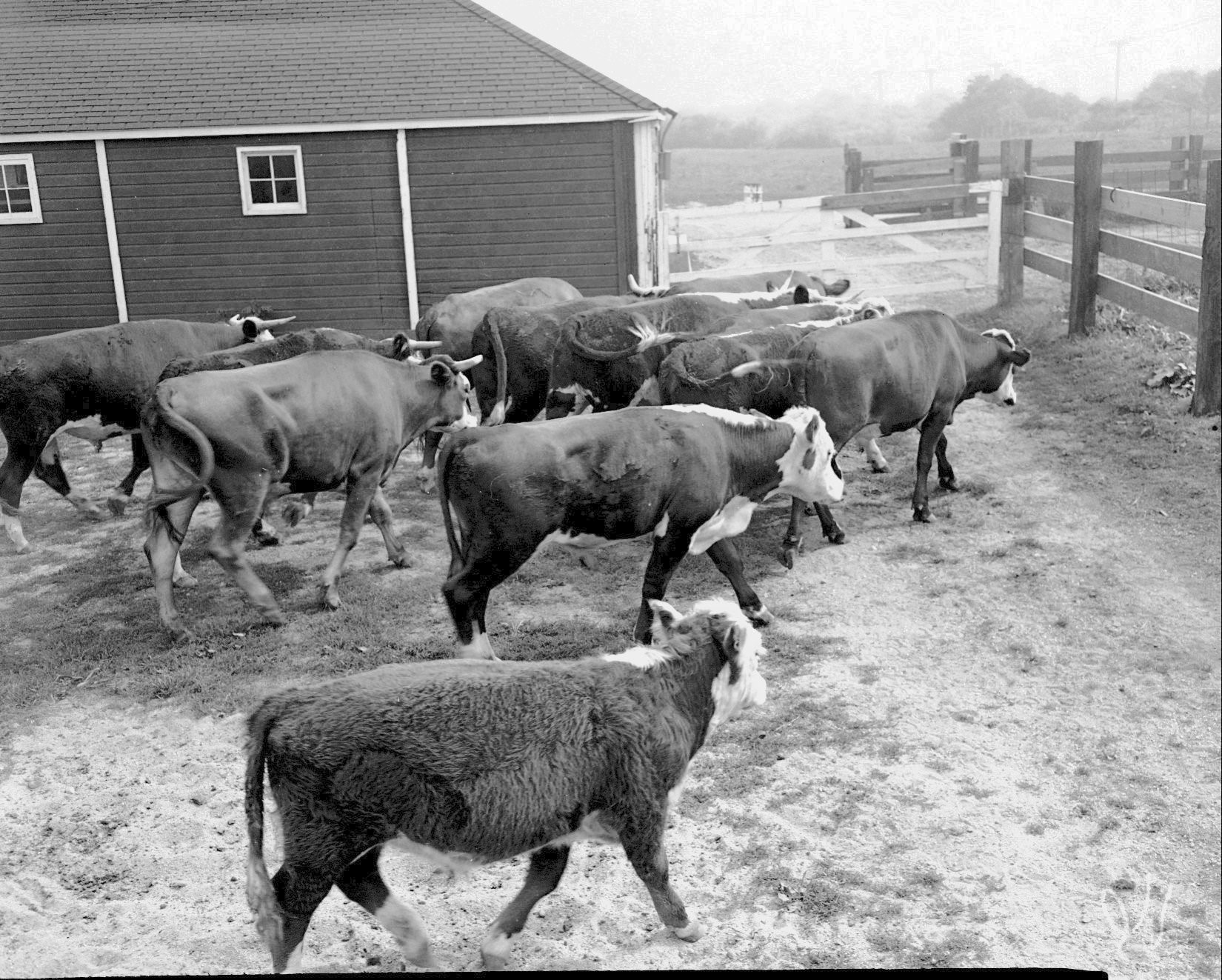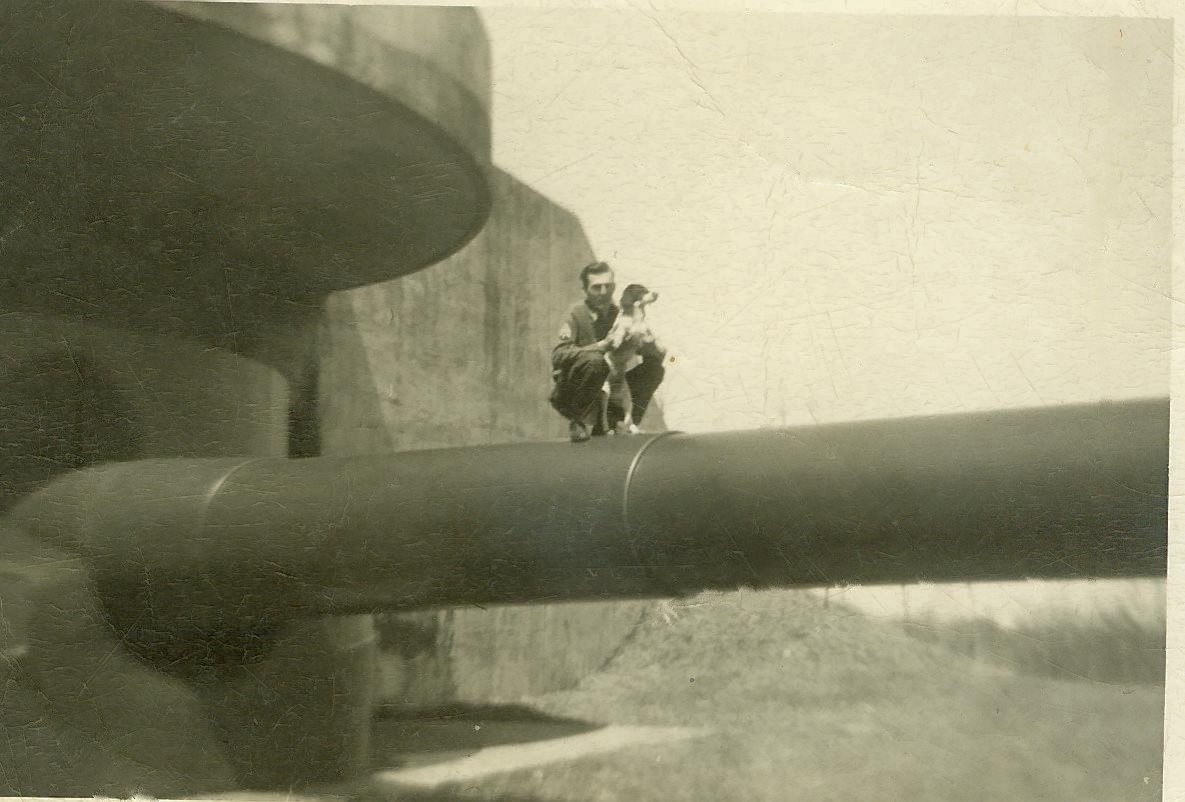
In the early months of 1948, the federal government moved to establish an animal disease laboratory at Camp Hero, which was no longer active as an Army base. The USDA hoped to develop a vaccine to protect livestock from hoof-and-mouth disease, which had infected cattle in Mexico and, it was feared, could play a role in bacteriological warfare.
Government scientists pitched the $25 million project to farmers at a meeting in Riverhead that March, reassuring them that strict precautions would prevent disease from spreading outside of Camp Hero:
“The entire section of land will be fenced in,” the Long Island Traveler, Mattituck Watchman reported a speaker at the meeting as having promised. “The laboratory itself will be surrounded by a concrete wall topped by chain-link fencing. Only healthy animals will come to the research center, and these will be artificially infected. They will enter what will probably be the most elaborately safeguarded barn ever built through a tunnel. The barn will be absolutely vermin and insect proof; even the air escaping from it will be sterilized.”
“After they have served their purpose in the experimentation, the animals will be destroyed and incinerated,” the report continued. “All wastes will be similarly disposed of, except liquids, which would be piped out into the ocean. The same elaborate precautions would be taken to prevent technicians and employees from transmitting the disease; they would be required to take showers upon entering and leaving the laboratory and all clothing will be sterilized.”
As a further safeguard, the USDA would buy up all cattle near the laboratory, the audience was told.
Dairy and livestock farmers vehemently opposed the project, fearing their herds would be infected. Leading them were Abe Katz of East Hampton’s Dune Alpin Farm, who was president of the Suffolk Dairymen’s Association, and Richard T. Gilmartin of Montauk, who was the secretary of the dairymen’s association and a dairy farmer himself (the New York Times noted in 1942 that his cows at the Suffolk County Farm in Yaphank were giving more milk with a new radio in the barn, especially when it played “soft, dreamy tunes”). Duck farmers, the Village of East Hampton, fishermen, and others also opposed putting the animal disease laboratory in Montauk.

And so, 75 years ago this week, the proposal to create a research center was killed, as far as Montauk was concerned, when a stipulation was deliberately added that required it to be situated on an island not “connected to the mainland.” The USDA went on to establish an animal disease center on Plum Island, a true island off Orient Point, where since 1954 it has “served as the nation’s premier defense against accidental or intentional introduction of … foreign animal diseases.” The facility, which has always been closed to the public (and whose employees decontaminate before and after work, commuting by ferry), is slated to shut down this year, with operations moved to Kansas.
Back in Montauk, Camp Hero was withdrawn from “surplus” status in 1951 and transferred to the Air Force during the Cold War. The facility closed in 1982 and the property is mostly state parkland today.
#CampHero #PlumIsland #HoofandMouth #Livestock #MontaukHistory #TBT #ThrowbackThursday

Reply or Comment